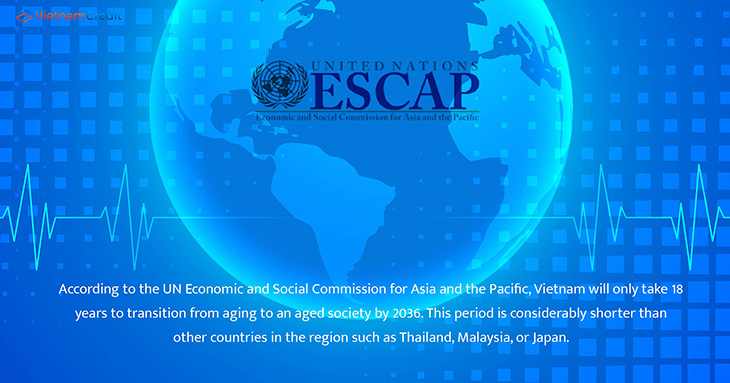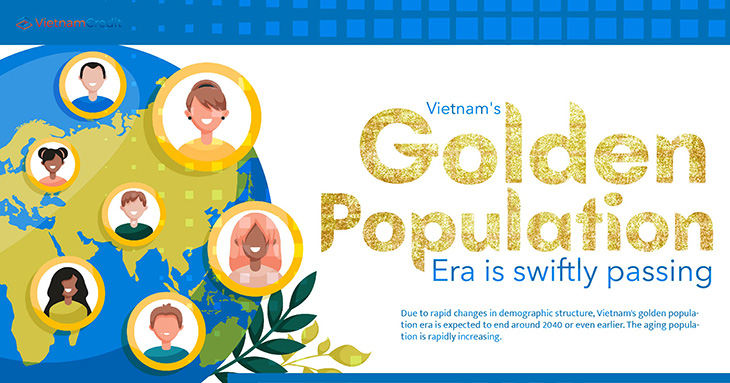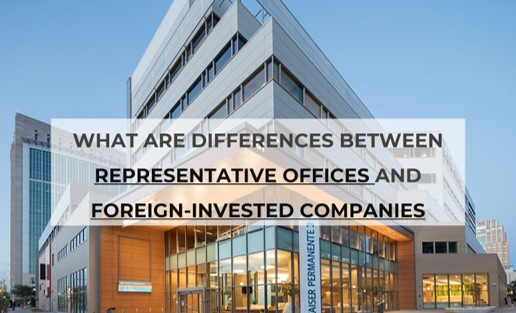Due to rapid changes in demographic structure, Vietnam's golden population era is expected to end around 2040 or even earlier. The aging population is rapidly increasing.
Decreasing birth rate
Mr. Hong Sun, Chairman of the Korean Chamber of Commerce in Vietnam (KoCham), assesses that Vietnam is currently one of the top destinations for South Korean investors due to many competitive advantages. However, the attractive golden population structure for FDI will gradually disappear over the next two decades. Along with this, the increasing labor costs will make foreign investors hesitant.
"FDI enterprises in general and South Korea in particular are quite concerned about Vietnam's future during that period, whether the environment will still be young, dynamic, and full of potential," Mr. Hong Sun shared.
Vietnam is rapidly transitioning from the golden population era to an older society as the birth rate has significantly decreased over a long period.
According to the UN Economic and Social Commission for Asia and the Pacific, Vietnam will only take 18 years to transition from aging to an aged society by 2036. This period is considerably shorter than other countries in the region such as Thailand, Malaysia, or Japan.

It is noteworthy that despite being in the golden population era, Vietnam's economy has not fully utilized its advantages. Billions of dollars of FDI capital have poured in over the years, but Vietnam is still struggling with increasing value in the global supply chain.
This assessment was made by author Thanh Thuy Giang Dao in an article on the ASEAN+3 Macroeconomic Research Office (AMRO).
For instance, about half of Vietnam's labor force only has basic education while around 40% have intermediate or higher education levels by the end of 2022.
In terms of the number of highly educated workers, Vietnam is slightly behind Thailand and Indonesia and significantly behind countries like Singapore, Brunei, or South Korea.
The productivity of Vietnamese workers is higher than Cambodia, Laos, and Myanmar but much lower compared to countries with similar manufacturing bases in the region like Thailand or Malaysia.
Another notable issue with Vietnam's population is that many elderly people are struggling to earn additional income to cover living expenses after retirement due to the limited pension fund.
The Asian Development Bank (ADB) in its latest report stated that Vietnam's social security system has low coverage due to many informal jobs. The coverage rate for Vietnamese workers is currently only 17%.
Preparing for an aging population
According to author Thanh Thuy Giang Dao, current policies such as encouraging early marriage, increasing retirement age may not be enough to address the rapidly aging population.
He recommends that Vietnam could provide more incentives, such as reducing personal income tax for working mothers, and social housing for young couples.
At the same time, the government should allocate more resources to increase labor productivity.
For example, low-skilled workers need more access to higher education and vocational training, especially in high-value-added industries. Rural and agricultural workers need training to diversify their work and expertise.

Moreover, social security measures need to be strengthened.
Therefore, expanding the coverage of elderly pensions to include informal workers and late contributors is necessary. Long-term health care and insurance services such as nursing homes need to be further developed.
Vietnam also needs to introduce additional financial policies or products to encourage people in the working age to save for retirement.
The ADB in its report recommends a series of policy measures to support healthy aging and ensure economic security.
Policy planners should aim to achieve universal healthcare coverage while expanding basic labor protections to older workers in the informal sector.
By introducing more flexible retirement ages, helping the elderly maintain health, and providing them with suitable employment opportunities, lifelong learning, and skill development, economies in the Asia-Pacific region like Vietnam can help older workers remain productive for longer periods.
Source: theleader
Compiled by VietnamCredit

























































